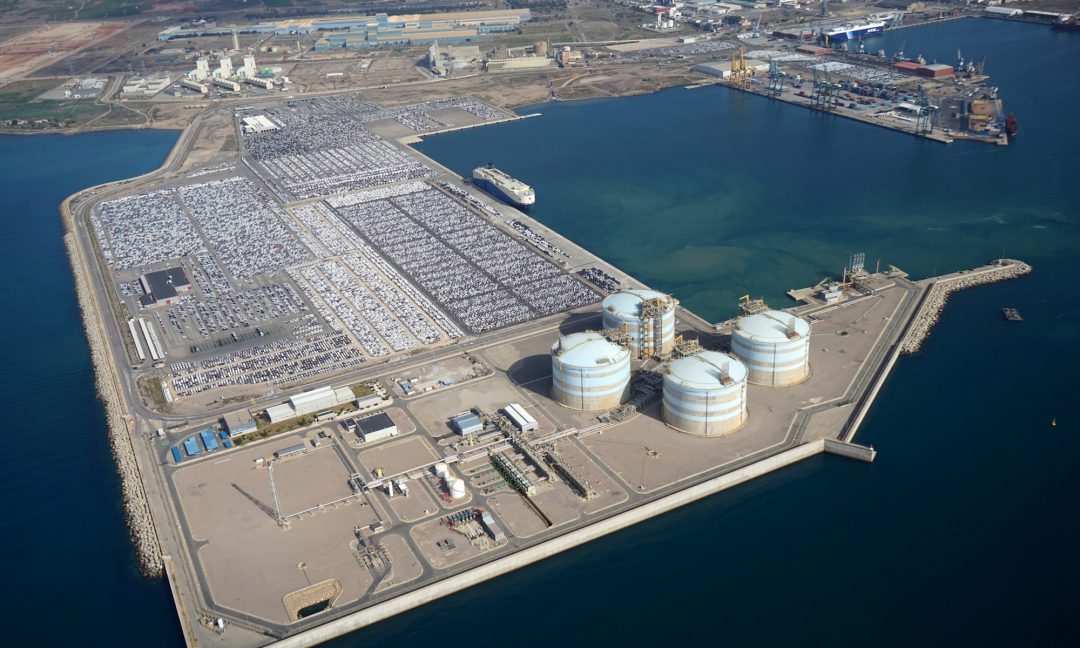The company Zeleros presented in the Port of Sagunto its SELF – Sustainable Electric Freight-forwarder project to develop its sustainable container movement system based on the hyperloop initiative, which will have a test track located in the Sagunto area. The event was attended by the president of the Port Authority of Valencia, Aurelio Martinez, the mayor of Sagunto, Dario Morena, and the CEO of Zeleros, David Pistoni.
The president of Valenciaport stressed that “this project has two things that are basic to the Port of Valencia, innovation and sustainability. If we are immersed in such an ambitious objective as reaching 2030 with energy balance, we must support all the initiatives that lead to that, and this is one of them”. Aurelio Martínez stressed that “we should be proud that this company is Valencian, has international projection, is disruptive and important. What we have to do above all is to support it and one way of doing this is for them to be able to experience what they are doing. For us it is an honour that they can come to the Port of Sagunto to test their prototypes”.
The PAV Board of Directors approved the concession of a plot of land in the Port of Sagunto to be able to test this Zeleros prototype on a test track. “The Port – emphasised Martínez – is at the service of Valencian and Spanish society, the port is not an end in itself, because that is why we are the most important port in Spain”. SELF represents an opportunity to validate a solution that could increase the competitiveness of the ports in a sustainable way and ValenciaPort is open to innovative solutions that benefit logistics and decarbonisation.
SELF, a sustainable and disruptive project
Zeleros, the European company based in Valencia that is leading the development of a hyperloop transport system, will build a prototype of its autonomous container transport system SELF in the Port of Sagunto. This technology will allow the technology company to advance in the development of its hyperloop system with an application aimed at decarbonising and automating container movements between terminals. The CEO of Zeleros explained that “we use the linear engine of the Hyperloop system to apply it to the movement of goods within the port context. Thanks to this we can validate and improve these technologies, as we are going to place a 100-metre pilot in the port of Sagunto that allows us to move these containers within what would be port logistics”.
David Pistoni has assured that “the construction of this track will begin at the end of this month in order to have it operational at the end of this year or the beginning of next year. It will allow us to carry out two types of tests, one for speed and the other for weight and safety, with a view to its logistical usefulness”. In this sense, the CEO of Zeleros has indicated that “there is a lot of interest from the port and logistics community at an international level. We are in talks with other regions interested in this type of energy transition technologies that are having a great impact”.
Pistoni stressed that “we want to take advantage of the leadership of the Port of Valencia to learn about the port system, exchange knowledge and collaborate on sustainable and innovative solutions”.
For his part, the mayor of Sagunto pointed out that “it is a great day in the sense that we are once again linked to a cutting-edge technology such as Zeleros. We are talking about a disruptive technology, it is very important that the administrations also manage to generate this ecosystem so that these projects can flourish”. Darío Moreno also thanked the PAV “for creating the conditions for us to have a test track of this type” and pointed out that “this new technology can mean two things that are key to our economy, on the one hand sustainability, and on the other hand, cost reduction and improved competitiveness to have a business fabric that can withstand the crisis but also lead economic growth”.
SELF system
The SELF system aims to accelerate the transition of ports and airports towards sustainability and automation. The system consists of vehicles guided and propelled by the rails where the linear motor is installed. This technology has been developed together with the Centro de Investigaciones Energéticas, Medioambientales y Tecnológicas. This linear motor is100% electric and can be operated in a fully automated way, like the intralogistics systems that can be found in logistics warehouses, reducing emissions and improving the efficiency of port operations.
With the aim of demonstrating the capacity of the technology and its impact on port application, the pilot project will be installed in the Port of Sagunto. A privileged environment to bring the technology as close as possible to the final application environment. The prototype consists of a 100-metre shuttle where the linear motor will be subjected to several missions to validate the functionality of the system.
























